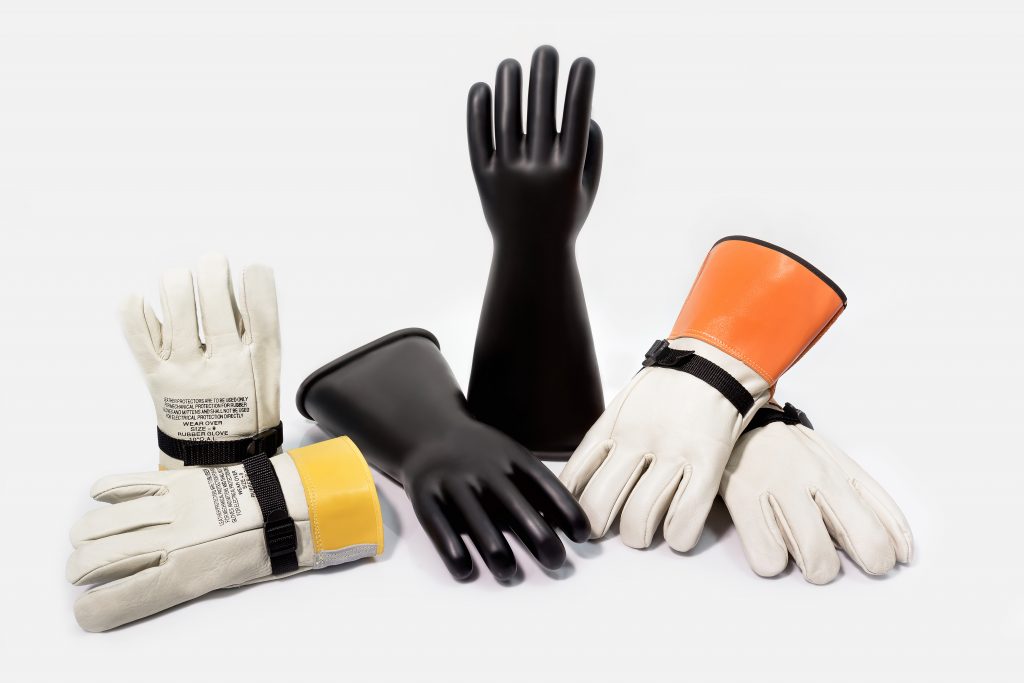Meter Safety Procedures
Even though you may normally deal with small voltages and currents, the values are never far away from lethal levels. You can receive a shock or burn from any common electrical circuit. The severity of the electrical shock depends on a number of factors:
- The amount of current that passes through the body
- The path that the current takes through the body
- Type of voltage—AC or DC
- Voltage strength
- The surrounding environment (dry vs. moist, wet or damp)
- The length of time that the current flows within the body
- Condition of the skin and the body’s chemical makeup
- Area of contact
- The surrounding environment:
- Special care should be taken when considering your surrounding environment. Are you indoors? Are you exposed to the elements? Is there surrounding circuitry that may still be “live”. What’s going on around you? Is there a storm going on outside? This could result in high electrical transients on the equipment being tested. This surge could exceed the rating of the meter being used possibly resulting in a dangerous arc flash or arc blast. Are you testing in a hazardous location? If so this might mean a specialized meter, such as an intrinsically safe meter and specialized training may be required. All of these factors should be considered while testing with a multimeter as they may affect how safe you actually are.
Normal household currents (plugs and light circuits) are generally limited by a circuit breaker to a value of 15 amperes. This device has been designed to trip and open a circuit if the 15 ampere value is exceeded. It is designed to protect against property damage and not necessarily personal injury. The possibility of causing a fatal injury can occur with a current flow of only 50 milliamperes (mA) or five one-hundredths of an ampere (.05A). The body is sensitive to relatively small values of current. In comparison, a 100-watt lightbulb draws approximately 0.85 ampere (850 mA) of current when connected to a 120 volt source. Remember, there are 15 amperes available in each standard house circuit. Electrical shocks, electrical burns, and other related injuries occur far too often and in most instances, go unrecorded. If you come across someone who you think has received or is receiving an electrical shock, always keep in mind:
- Don’t touch the person and don’t use a conductive tool to free the person that may be electrically energized.
- Shut off the power or pull the plug if it is safe to do so. If you are not able to, go for help.
- Remove the person from the contact point using a non-conductive object such as a dry piece of wood or a leather belt.
- Call 911 for help if the person is obviously injured (loss of consciousness, significant trauma, etc.)
- Seek medical attention (first aid) in any case of injury such as an altered mental state (confusion, slow/slurred speech) or other obvious injury (laceration, burn, etc.). When performing maintenance or doing repair work, or when a machine is in an unsafe state, perform lock out/tag out procedures in conjunction with the T3 testing method and approved safety glasses and voltage rated gloves must be used.
T3 testing method
- T1-test a known live circuit with a meter or non-contact voltage tester.
- T2-test the device or circuit you plan to work on to ensure it’s “dead” or de-energized.
- T3-re-test the known live circuit to ensure the testing device being used (meter or non-contact tester) is still working as it should and has not been damaged by T2.
It is vital to eliminate the possibility of the machine being energized unexpectedly. In order to create a safe work environment, workers need to guard against contact with electrical voltages and control electrical currents by de-energizing the circuits providing power to the equipment you will be working with.
Make the environment safer by doing the following:
 Always wear the approved and appropriate personal protective equipment (PPE): safety glasses, voltage rated rubber gloves with leather protectors and nonflammable clothing, etc.
Always wear the approved and appropriate personal protective equipment (PPE): safety glasses, voltage rated rubber gloves with leather protectors and nonflammable clothing, etc.- Using the T3 testing method.
- Protect portable electrical equipment with an approved ground-fault circuit interrupter (GFI) when using the equipment outdoors.
- Ensure all the cords are in good condition, with the caps and plugs well secured on the cables. Ensure the proper U-ground plug is in good working condition.
- Use cords of sufficient gauge for the amount of current used by the tools they are powering. Each tool is labelled with the power that it draws.
- Treat all conductors and bare wires—even apparently de-energized ones—as if they are energized until they are proven otherwise by using lock out/ tag out procedures and the T3 method.
- Do not make any electrical measurements without specific instructions from a qualified person.
- When servicing equipment be sure it is “locked out,” meaning the electrical service is shut off at a disconnect panel whenever possible, the panel is locked, and the only key is kept by the person working on the equipment.
- When replacing components on mobile equipment, disconnect the battery.

